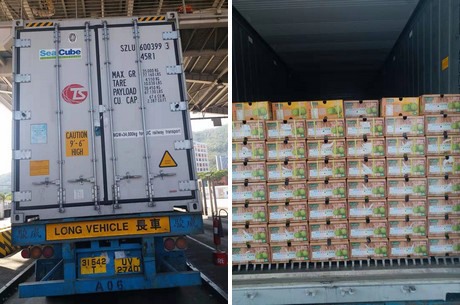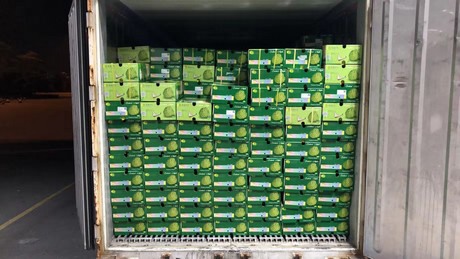A new regulation on sulfur limits, initiated by IMO (the International Maritime Organization) and scheduled to come into effect on January 1, 2020, require the emissions of sulfur oxides from all ships worldwide be reduced from 3.5% to 0.5%. The implementation of this regulation will indirectly lead to a 20% increase in shipping costs.

“Although 20% increases in the freight rate seem large, it's only about 2% when compared with the value of the product. For example, the value of a container of durians is 500,000-600,000 yuan while the freight costs from Thailand to Shanghai Port are only around 15,000 yuan. Therefore, we believe that the increase in shipping costs will not have a significant impact on traders,” Mr. Huang Yulin of Junfan International Trading Co., Ltd. commented.
“In addition, as the consumption levels of Chinese people increase, imported fruit has become a category with rigid demand. During the peak season, the first thing the shipper considers is the timing of the shipment, not logistics costs. For example, in the peak durian season in Thailand, the shipping price per container increases by 200-400 dollars per week, but containers and cargo spaces are still in short supply.”

When talking about the import trend over recent years, Mr. Huang said, “The annual fruit trade volume in China is around 250,000 containers. The shipping volume of durians, longan, mangosteens (Eastern goods), and cherries, oranges, Grapes (Western goods) has been growing rapidly over recent years. In terms of sea freight, based on the volumes that we have handled over recent years, most Western goods used to arrive at Guangdong Port and Shanghai Port, but with the opening of the Nansha Free Trade Zone, more and more traders are choosing to arrive at Nansha Port."
"Prior to the Chinese New Year, Nansha shipping companies opened seven direct services from Chile to Nansha. At the same time, Southeast Asian shipping companies have one or two regular services per week from Laem Chabang, Thailand to Nansha. In terms of land transportation, with the official opening of the Pingxiang Agricultural Product Import and Export Trading Market, the amount of fruit imported through Pingxiang by land has increased sharply. We handle about 100 containers of imported mangoes alone each day. There are also large volumes of longans and mangosteens entering the Chinese market via Pingxiang.”

Junfan International Trading Co., Ltd. is a specialized cross-border fruit logistics service provider that provides logistics services covering the entire supply chain by sea, land, and air. They have offices in various ports in China and abroad and handle about 18,000 reefer containers each year. “We want to support more fruit traders with the most professional services.”
More information:
Contact: Luo Sixiao - Marketing Director
Company: Guangzhou Junyun Trading Co., Ltd.
Tel.: +86 13609015171
